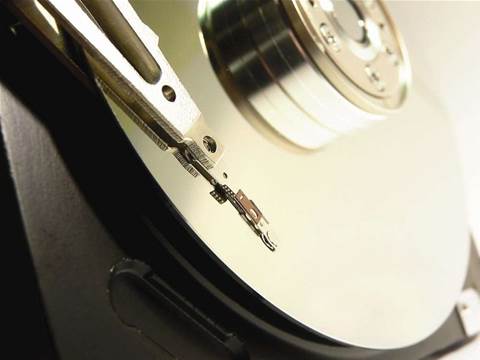IBM storage director Asia Pacific, Francois Vazille, also believes that services are becoming an increasingly important part of the Australian storage landscape. “Implementation services have become essential service to get IT projects up on time and on budget. Many implementations of perfectly sound solutions fail because the services are not confident installing/implementing and as a result the channel has become more than just a selling arm. It is now the key to effective implementation because it offers those services, and also has a thorough understanding of client needs and anxieties.”
CommVault regional director Oceania, Gerry Sillars, agrees that services are important, but he argues that it’s too difficult for new vendors to break into the Australian market and there’s actually not enough channel partners to go around. “Most major players in storage have been for a long while which makes it hard for new vendors like LeftHand or 3PAR, etc, to break in because there’s not enough channel partners to go around and the older players like to keep the new ones out.
“The problem is not so much with the hardware any more, it’s software and services. There is not enough expertise in the channel to support a plethora of vendors, as you see in the USA, and there are only a handful of specialist storage resellers who can handle the professional services side. As a result, most vendors have to provide their own professional services, as too many resellers which lack the skills have stuffed up.”
While there is little disagreement among vendors, distributors and resellers that the service component of the sale is of major importance, there is a major format fight shaping up between FC and iSCSI. Adaptec South East Asia Regional manager Demetri Christodoulou believes that vendors are blurring the distinction between network attached storage (NAS) and storage area networks (SAN) by offering dual-capable products.
“The SAN marketplace is fairly well divided between the fibre and Ethernet camps, with each telling the public that the other is unnecessary and their product is the best. NAS has now become a commodity, with vendors producing very cheap, low-function products at the bottom end of the market, and traditional NAS vendors pushing their products up into the enterprise marketplace competing with traditional servers for storage within the enterprise.”
Quantum’s Busson has a more cynical take on the duel between the two competing formats. “Every hardware manufacturer claims to have the best technology for your particular business, and more often than not the claims have more to do with what they “have on the truck” than what is right for your data. Basically, a SAN does block input/output (I/O) which is just like having a disk directly attached to a server (DAS). A NAS storage device is for file systems I/O, where the file request is redirected over a network to a device where the file I/O is actually performed.”
Databases are probably the largest example of block level data access in the data centre today. When an application on the network requests information, the request is handled by a server and the correct chunks of data are returned to the client. Only the server knows where the data comes from or where it’s located within the storage subsystem. “Because the server has to manipulate the data prior to sending it out to the client, we want it to be ‘as close’ to the server as possible. In this instance ‘close’ has more to do with direct control rather than distance,” said Busson.
File level data access is frequently used in “workgroup” environments. A good example of this type of access would be a word processing or spreadsheet application. With this type of access there is no server involved, just direct manipulation by the client of an entire file. Data access that follows this type of pattern cares very little where the storage is, as long as the client has control over the file. In this type of environment, administrators often want to be able to access these files from multiple locations, or “share” the files.
The industry shifts from snorage to storage
By
Darren Baguely
on May 28, 2008 10:26AM

Page 3 of 4 | Single page
Got a news tip for our journalists? Share it with us anonymously here.
Partner Content

Promoted Content
From Insight to Opportunity: How SMB Service Demand is Shaping the Next Growth Wave for Partners
_(11).jpg&h=142&w=230&c=1&s=1)
The Compliance Dilemma for Technology Partners: Risk, Revenue, and Reputation

Tech Buying Budgets for SMBs on the Rise

Tech Data: Driving partner success in a digital-first economy

Shure Microsoft Certified Audio for Teams Rooms




.jpg&w=100&c=1&s=0)
_(8).jpg&w=100&c=1&s=0)







.jpg&q=95&h=298&w=480&c=1&s=1)
.jpg&q=95&h=298&w=480&c=1&s=1)
.jpg&q=95&h=298&w=480&c=1&s=1)



